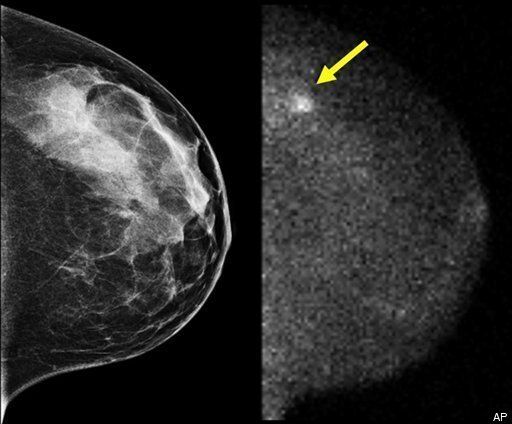
Odds are that you know someone who has been diagnosed with breast cancer. One in eight U.S. women will develop this terrifying disease in their lifetime. Breast cancer is the most common invasive cancer and a leading cause of death in American women.
Though the odds of survival have dramatically improved over the past several decades, prevention of breast cancer has not been a focus of many research efforts. That is, in part, because the causes of breast cancer are not very well understood. Inherited genes account for less than a quarter of breast cancer cases. And though a number of risk factors, such as delaying childbirth until later in life, have been identified, there is good evidence to suggest that exposure to chemical pollutants, is also a significant part of this disease.
In laboratory animals, over 200 chemicals have been linked to the development of mammary (breast) cancer but few are regulated based on this outcome. For example, we know that Bisphenol A (BPA) predisposes laboratory rodents to developing breast cancer, turns on genes associated with aggressive breast cancer in human tissue, and interferes with chemotherapies used in breast cancer treatment. Of the tens of thousands of other chemicals in commerce, most have never been tested in a way that would allow for the detection of their links to breast cancer.
The Natural Resources Defense Council has been participating in The Breast Cancer and Chemicals Policy project over the past year to improve the way that chemicals are tested for their links to breast cancer. Chemicals linked to breast cancer should be better regulated and testing to find the most likely culprits is where we have to begin. The project also has identified a way to prioritize testing of the tens of thousands of chemicals for testing.
Today we are presenting the findings of this project at the annual meeting of the American Association for the Advancement of Science (AAAS).
California’s Breast Cancer Research Program, the largest state funded breast cancer research effort in the nation, recognized the potential significant impact of environmental chemicals on the development of breast cancer and has launched a Special Research Initiative to promote further research in this area. The first project launched under this initiative was the Breast Cancer and Chemicals Policy research project which was awarded to the UC-Berkeley Center for Occupational and Environmental Health. NRDC was also a partner in this project and I serve as co-director along with my colleague, Gina Solomon, who has been a core contributor throughout the project. The project was funded, in part, to develop a report for the State of California during their development and implementation of the Green Chemistry Initiative, a statewide policy initiative to reduce the impacts of toxic chemicals on public health and the environment.
The project had 3 major goals:
- Develop an approach, using currently available laboratory tests, for identifying chemicals that may raise the risk of breast cancer;
- Identify data gaps and research needs to improve the detection of chemicals associated with breast cancer;
- Pilot a project model that could be applied to other disease endpoints, such as other types of cancer or developmental diseases, with the ultimate goal of producing a comprehensive approach for gathering information about a chemical’s toxicity.
Over the past year, our panel of over 20 experts has studied the biology of breast cancer development – including known risk factors and other biological events that precede development of a tumor. We have also identified available laboratory tests that could be used to identify environmental chemicals that trigger these events. For example, chemicals which mimic the female sex hormone estrogen. And finally we have developed criteria for prioritizing the selection of chemicals for toxicity testing. By identifying environmental chemical hazards, the approach developed by the Panel could contribute significantly to breast cancer prevention and could also promote the use of safer alternatives.
Our report is still in draft form and is expected to be finalized by April 2010.